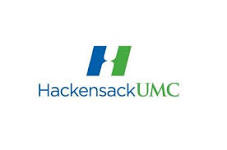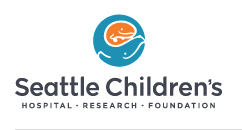Open Label Extension Study to Evaluate the Safety of SD-101 Cream in Subjects With Epidermolysis Bullosa
| Status: | Terminated |
|---|---|
| Conditions: | Skin and Soft Tissue Infections |
| Therapuetic Areas: | Dermatology / Plastic Surgery |
| Healthy: | No |
| Age Range: | Any |
| Updated: | 11/16/2018 |
| Start Date: | March 26, 2014 |
| End Date: | September 14, 2018 |
An Open Label Extension, Multi-Center, Study to Evaluate the Safety of SD-101 Cream in Subjects With Epidermolysis Bullosa
The purpose of this study is to assess the continued safety of topical use of SD-101 cream
(6%) in subjects with Epidermolysis Bullosa
"Funding-Source-FDA OOPD"
(6%) in subjects with Epidermolysis Bullosa
"Funding-Source-FDA OOPD"
Epidermolysis Bullosa (EB) is a rare group of inherited disorders that manifest as blistering
or erosion of the skin and in some cases, the epithelial lining of other organs, in response
to little or no apparent trauma. There is a lack of effective agents for skin disorders
involving blistering and lesion formation. Current approved therapies are minimally effective
and have safety issues. Scioderm has developed SD-101 Dermal Cream (6%) for treatment of EB.
This is an open label extension study to assess the continued safety of topically applied
SD-101 Dermal Cream (6%) in subjects with Simplex, Recessive Dystrophic, and Junctional
non-Herlitz Epidermolysis Bullosa.
SD-101 Dermal Cream (6%) will be applied topically, once a day to the entire body for the
duration of the study. Subjects who successfully complete the entire SD-003 study will have
the option to roll over into the SD-004 study. The baseline visit 1 will occur at the final
visit date for SD-003. The Body Surface Area (BSA) coverage of blisters and lesions
assessment made at the final SD-003 study visit will be used as the baseline information at
visit 1 for the SD-004 study. The subject will return to the study site for visit 2 through
visit 14 (1080 days) to have BSA assessed. Body Surface Area will be assessed at all
subsequent scheduled study center visits. Scheduled study center visits occur every 6 months
after visit 14 (visits 16, 18, 20, etc.). After completion of visit 14, the next subject
visit (visit 15) will be a phone call from the site to the patient. Telephone visits will
occur every 6 months thereafter (visits 17,19, 21, etc.) and include assessment of adverse
events and concomitant medications only. For female subjects of childbearing potential, a
urine pregnancy test will be performed at visit 4 and every 6 months up to and including the
final study visit.
or erosion of the skin and in some cases, the epithelial lining of other organs, in response
to little or no apparent trauma. There is a lack of effective agents for skin disorders
involving blistering and lesion formation. Current approved therapies are minimally effective
and have safety issues. Scioderm has developed SD-101 Dermal Cream (6%) for treatment of EB.
This is an open label extension study to assess the continued safety of topically applied
SD-101 Dermal Cream (6%) in subjects with Simplex, Recessive Dystrophic, and Junctional
non-Herlitz Epidermolysis Bullosa.
SD-101 Dermal Cream (6%) will be applied topically, once a day to the entire body for the
duration of the study. Subjects who successfully complete the entire SD-003 study will have
the option to roll over into the SD-004 study. The baseline visit 1 will occur at the final
visit date for SD-003. The Body Surface Area (BSA) coverage of blisters and lesions
assessment made at the final SD-003 study visit will be used as the baseline information at
visit 1 for the SD-004 study. The subject will return to the study site for visit 2 through
visit 14 (1080 days) to have BSA assessed. Body Surface Area will be assessed at all
subsequent scheduled study center visits. Scheduled study center visits occur every 6 months
after visit 14 (visits 16, 18, 20, etc.). After completion of visit 14, the next subject
visit (visit 15) will be a phone call from the site to the patient. Telephone visits will
occur every 6 months thereafter (visits 17,19, 21, etc.) and include assessment of adverse
events and concomitant medications only. For female subjects of childbearing potential, a
urine pregnancy test will be performed at visit 4 and every 6 months up to and including the
final study visit.
Inclusion Criteria:
- Informed consent form signed by the subject or subject's legal representative; if the
subject is under the age of 18 but capable of providing assent, signed assent from the
subject.
- Subject (or caretaker) must be willing to comply with all protocol requirements.
- Subject must have successfully completed the SD-003 study.
Exclusion Criteria:
- Subjects who do not meet the inclusion criteria.
- Pregnancy or breastfeeding during the study. (A urine pregnancy test will be performed
at the final visit for SD-003 for female subjects of childbearing potential)
- Females of childbearing potential who are not abstinent and not practicing a medically
acceptable method of contraception
We found this trial at
7
sites
225 E Chicago Ave
Chicago, Illinois 60611
Chicago, Illinois 60611
(312) 227-4000

Ann & Robert H. Lurie Children's Hospital of Chicago Ann & Robert H. Lurie Children
Click here to add this to my saved trials
Click here to add this to my saved trials
Hackensack University Medical Center Hackensack University Medical Center, part of the Hackensack University Health Network,...
Click here to add this to my saved trials
Click here to add this to my saved trials
4921 Parkview Place
Saint Louis, Missouri 63110
Saint Louis, Missouri 63110
Click here to add this to my saved trials
Click here to add this to my saved trials
Seattle Children's Hospital Seattle Children’s Hospital specializes in meeting the unique physical, emotional and developmental...
Click here to add this to my saved trials

